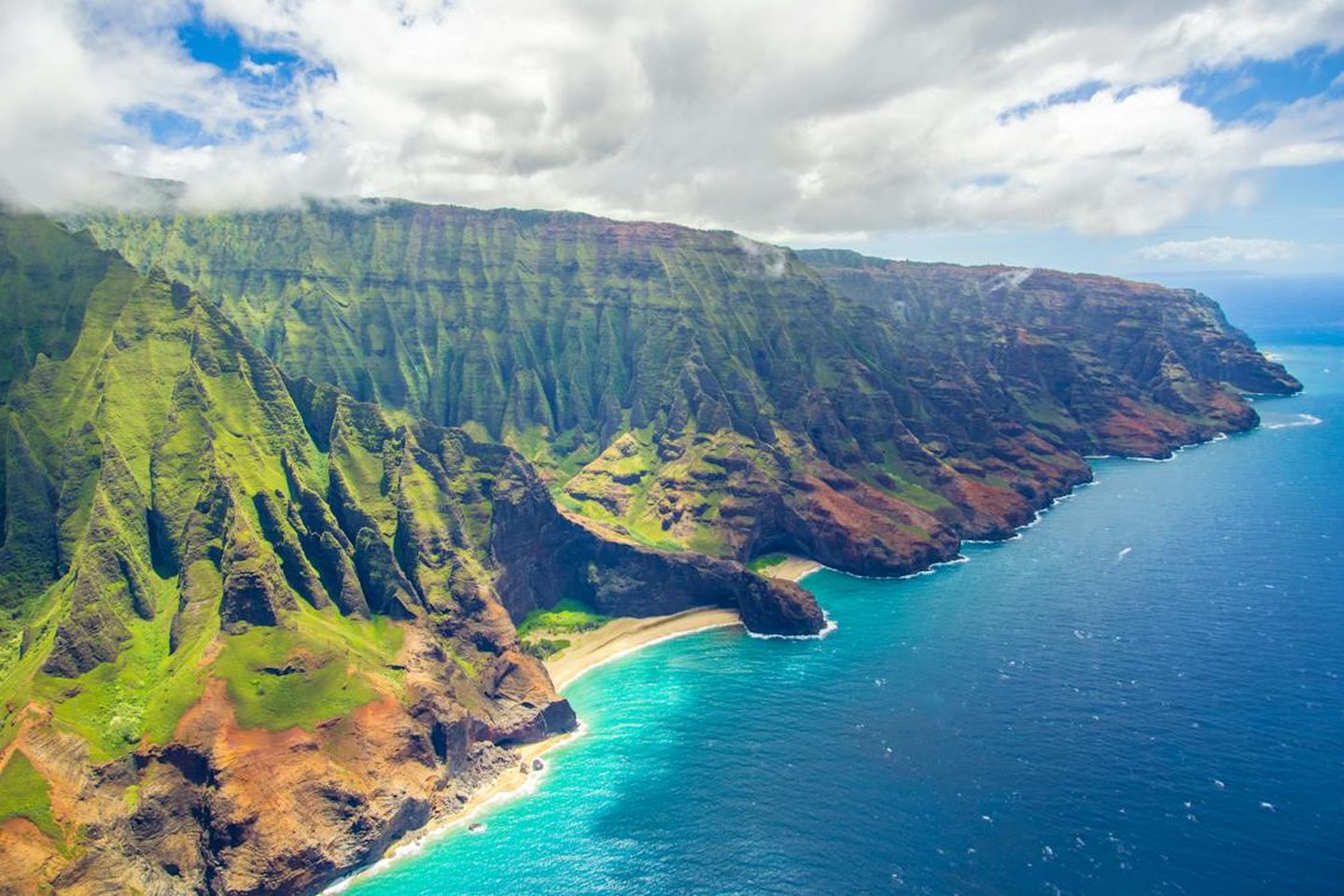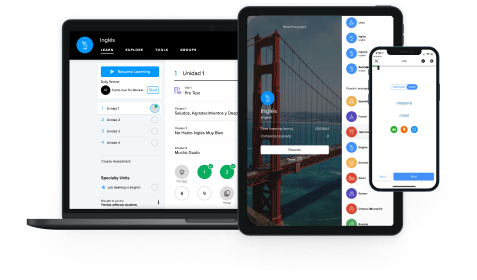By the mid 1980s, less than 50 children and 2,000 adults spoke Hawaiian.

Shining a spotlight on indigenous languages: Hawaiian
Did you know that nearly half of the world’s languages are in danger of extinction? The most threatened among these are indigenous languages, which are celebrated annually on the second Monday in October; Indigenous People’s Day. If you’re as passionate about preserving the future of all languages as we are, read on to learn more about Hawaiian and why we should shine a spotlight on indigenous and endangered languages.
THE HISTORY
The Hawaiian language, called ʻŌlelo Hawaiʻi (or “speak Hawaiian”) by its speakers, is a Polynesian language that originates from the Hawaiian archipelago, and is presently found primarily on Niʻihau and Hawaiʻi Island.
Both Hawaiian and English are the official languages of the State of Hawaii, but the Hawaiian language is critically endangered, according to UNESCO.
As of the 2015 American Community Survey report, there are just over 26,000 speakers of Hawaiian in the United States, and nearly 19,000 of them live in Hawaii. Ethnologue estimates that about 2,000 of them are native speakers. While most Hawaiian speakers also use English in their day-to-day lives, the very few residents of Niʻihau Island, an isolated, privately owned island, still primarily rely on Hawaiian.

In many ways, the decline of the Hawaiian language is the familiar, tragic story of colonialism. When Captain James Cook of Britain first arrived on Hawaii in 1778, there were about 680,000 Native Hawaiians on the islands, according to a recent estimate. European diseases and violence ravaged the native population, which was cut nearly in half by 1800 and reached a low of under 24,000 people by the 1920 US Census. A more official blow to Hawaiian came in 1893, when a coup overthrew Hawaii’s Queen Liliʻuokalani. A few years later, Hawaiian was banned in schools; it was not taught, and children were even punished for speaking Hawaiian on the playground. According to the University of Hawaiʻi Foundation, in the late 1800s, nearly 90% of Hawaiian speakers were literate. By the mid 1980s, less than 50 children spoke the language, and the 1,000 – 2,000 adult speakers were dwindling.
In spite of these dire statistics, the story of the Hawaiian language may have a happy ending, thanks to a small number of people making immense efforts to revitalize it. In the 1970s, language activists broadcast radio programs in the Hawaiian language, and Hawaiian was given official status by the state constitution, making Hawaii the only state in the US with two official languages.

Students learn to read at a Pūnana Leo, one of many Hawaiian language immersion preschools in the state.
In the 1980s, the first Hawaiian language immersion preschools, Pūnana Leo, were established by second-language speakers who wanted their children to learn the language of their grandparents, and to prevent the Hawaiian language from being lost with its eldest speakers.
Today, there are over twenty Hawaiian immersion schools in the state, and they now teach over 2,000 children per year from preschool through high school. Additionally, the University of Hawaii offers BA, MA, and PhD degrees in Hawaiian. Many of the fluent speakers of Hawaiian today are students or graduates of the Pūnana Leo schools, and children make up the largest demographic of Hawaiian language learners. The success of these initiatives have made Hawaiian a poster child for language revitalization efforts.
Hawaii is the only state in the U.S. with two official languages.
THE LANGUAGE
Linguistic Characteristics of Hawaiian
Aloha!Many people know this Hawaiian greeting, used for both “Hello” and “Goodbye.” But did you know that Alohacan be used to express a range of emotions — love, affection, compassion, gratitude, kindness, pity, grief, etc. — that encompass granting love and respect to oneself and others? The word Aloha, along with this meaning, actually exists in all Polynesian languages. The essence of Aloha is so important in Hawaii that the ‘Aloha Spirit,’ or ‘the coordination of mind and heart within each person,’ was written into state law in 1986.
The ‘Aloha Spirit’ was written into state law in 1986.
Did you notice the apostrophe-like character in the native spelling, ʻŌlelo Hawaiʻi? That is actually a consonant in Hawaiian, called a glottal stop, or ʻokina. In English, we have a similar sound between syllables in “uh-oh” and in some pronunciation variants of words like “kitten” or “mitten.” In Hawaiian, when a “w” follows an “a,” it can be pronounced either like the English “w” or “v,” so the native pronunciation is “Huh-wai-ee” or “Huh-vai-ee,” rather than the anglicized “Huh-wai-yee.”
Including the ʻokina, the Hawaiian alphabet only has eight consonants and five vowels with long and short versions (contrast this with English, which has an unusually large inventory of sounds of about 24 consonants and 15-20 vowels, depending on the dialect). Hawaiian consonants have to be followed by vowels, and words have to end in vowels. Because the language has so few consonants and relatively limited structure, Hawaiian words can be quite long. For example, the name of the Hawaiian state fish is the humuhumunukunukuapuaʻa [link].
Hawaiian has a small inventory of sounds and relatively strict limitations on how they can be combined, which results in very long words, like the name of the Hawaiian state fish: humuhumunukunukuapuaʻa.

THE FUTURE
As the Hawaiian language experienced its renaissance in the 1980s, speakers quickly realized that they needed words for modern concepts and technology, like “computer” or “cell phone.” The Hawaiian Lexicon Committee was established in 1987 to coin new words, and individuals can submit suggestions and requests.
To learn more about Hawaiian language and culture, check out the organization behind the Hawaiian language educational system, ʻAha Pūnana Leo , and the Kawaihuelani Center for Hawaiian Language at the University of Hawaiʻi at Manoa. The Ulukau website is replete with Hawaiian language resources, including dictionaries, newspapers, books, genealogies, photographs, and more.
Before we say Aloha to our exploration of the Hawaiian language, here’s a cultural tidbit about one of Hawaii’s lasting cultural impacts on the world:
Queen Liliʻuokalani was not only the last monarch of Hawaii; she was also a prolific songwriter. By far her most famous composition is ,‘Aloha ʻOe(Farewell to Thee) [link] which is recognized worldwide and has become a symbol of Hawaiian culture.
Learn the language behind this poignant song; a beautiful love song turned elegy to a lost kingdom, and carry a piece of rich Hawaiian culture with you.
Mahalo nui loa(many thanks) to Lee Rogers, Hawaiian language expert, for providing valuable feedback on this post.
